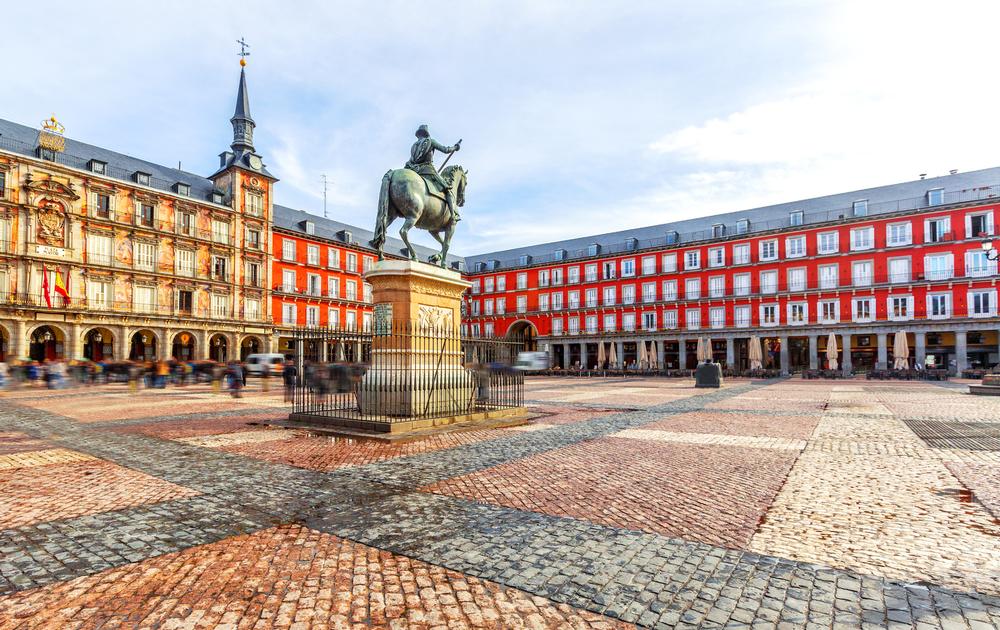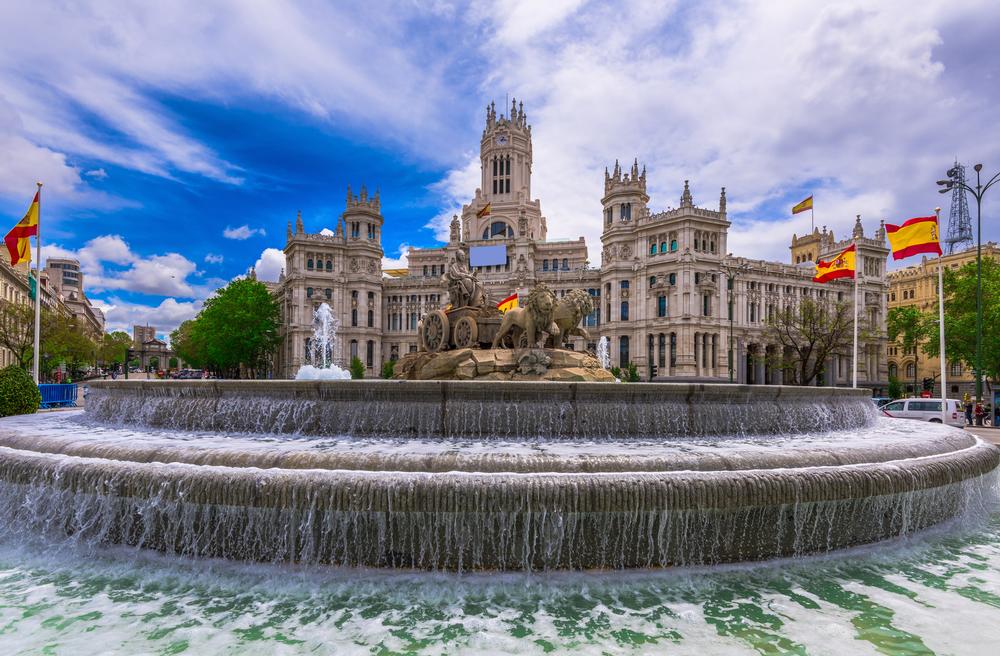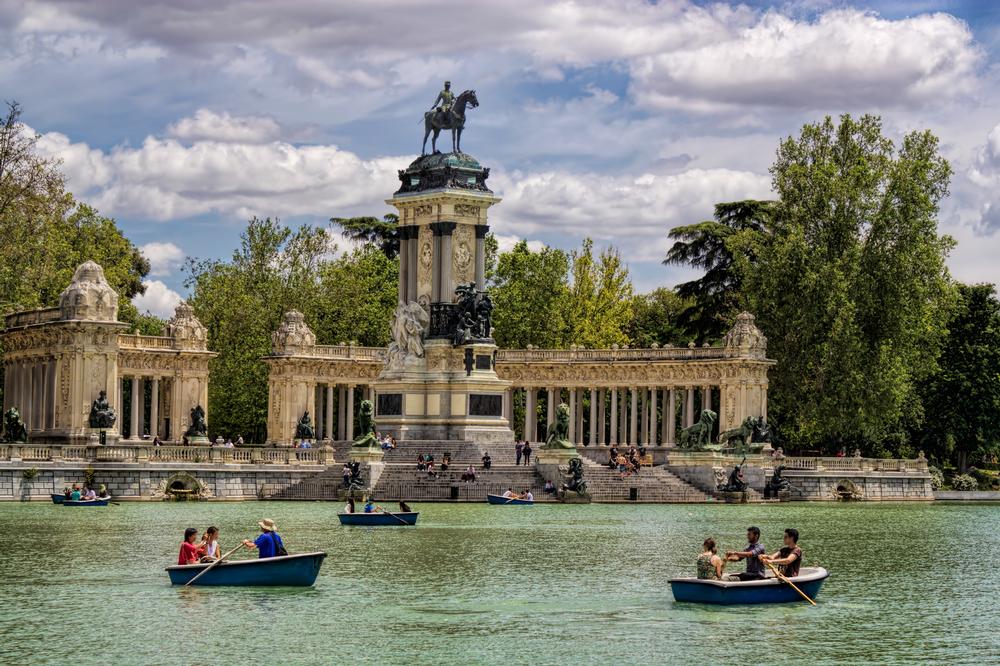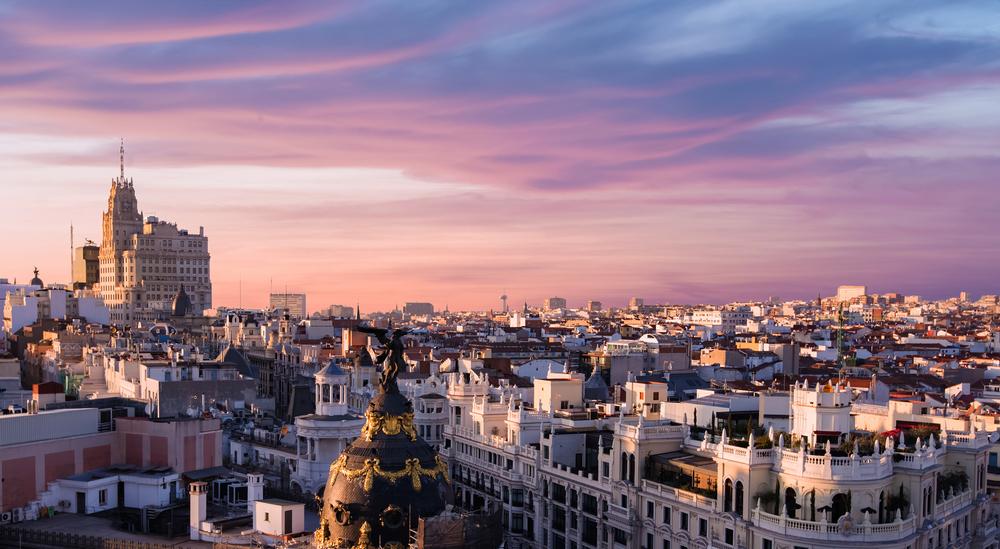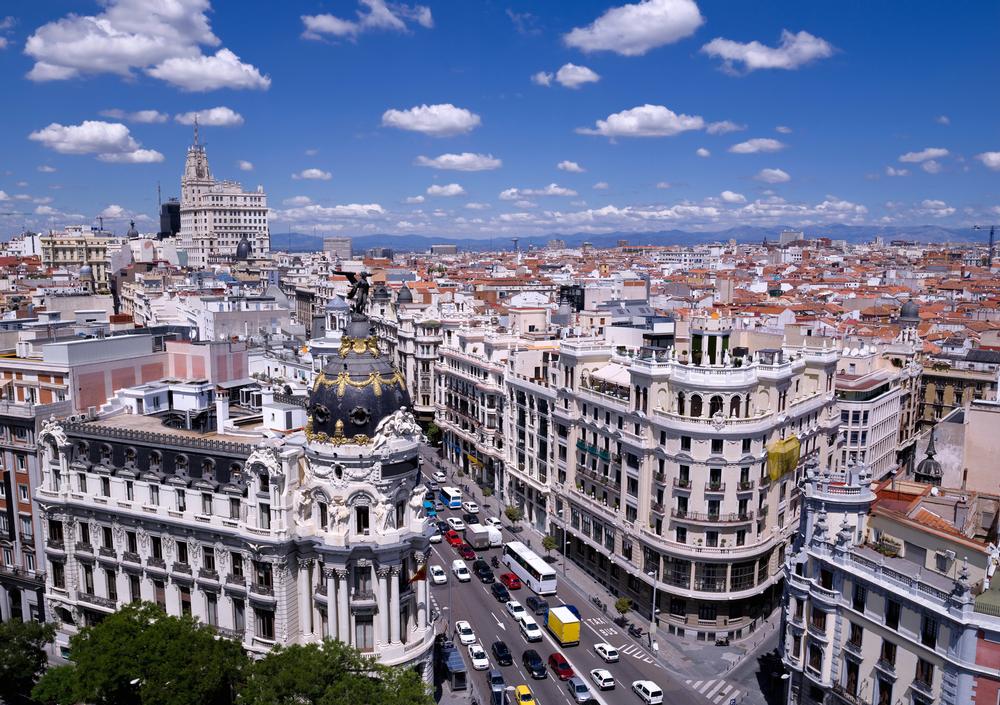
© Courtesy of fresnel6 - Fotolia.com
January is the coldest month of the year in Madrid with an average high temperature of 50°F (10°C) and an average low temperature of 34°F (1°C). Expect dry weather during Madrid’s winter months and quick changes in temperature is also normal in this city.
In February, the average high temperature rises a few degrees to 54°F (12°C). The average low temperatures increase about half the rate of the high temperature and settles at 36°F (2°C).
Madrid Weather in March: The month of March sees quite a jump upward for the average high temperature which rises to 61°F (16°C). Meanwhile, the average low temperature rises a few degrees to 39°F (4°C).
April gets a moderate amount of sunshine with an average of 7 hours of sunshine per day. Meanwhile, the average and average low temperatures creep up slightly and range between 63°F (17°C) and 41°F (5°C). It’s a fantastic idea to visit the parks this time of the year as the flowers and foliage are in full bloom and incredibly vibrant.
In May, the average high temperature and average low temperatures hit 72°F (22°C) and 46°F (8°C) respectively.

Madrid Weather in June: The days are long and bright in June with the arrival of summer. This month gets the second to the highest amount of sunshine as well with 12 hours of gorgeous, albeit hot, daylight per day. The average high temperature makes a huge leap to 84°F (29°C) along with the low temperature average which rises to 55°F (13°C).
July tops the yearly charts for a few reasons, the first being that it is the hottest month with the high temperature averages climbing to 91°F (33°C). With 13 hours of sunshine per day, July also has the highest average for sunlight out of the year. Congruently, this month receives the lowest precipitation rate annually with just 10mm of rain received over the span of 3 days.
In August, the average high and average low temperatures remain exactly the same, tying with the previous month for the hottest temperatures in the year. The precipitation average also remains the same.
September offers a much welcome respite from the intense heat of Madrid’s summer as the average high temperature decreases to 84°F (29°C). The average low temperature also decreases to 57°F (14°C).
In October, the average high and average temperature goes down even further as temperatures measure in at 84°F (29°C) and 57°F (14°C) respectively.
Madrid Weather in November: It’s a rainy month in November with Madrid receiving about 50mm of rain in the span of 9 days – the most it receives in the whole year. The average high temperature drops to 59°F (15°C) while the average low sinks to a chilly 39°F (4°C).
December receives the same level of precipitation of November, though it is spread out over 10 days. It also receives the least amount of sunshine in the year with an hour average per day. The average high and average low temperature decrease again slightly to 52°F (11°C) and 36°F (2°C) respectively.
If you’re the type of person who really can’t stand the heat, the best times to visit is definitely in the spring months of April through June and the early autumn months of September and October. For the best of Madrid’s parks and most popular public celebrations, plan your trip in between April and May. As one of Madrid’s peak seasons however, be prepared to contend with a lot of tourists if you come in Spring. Those who want to experience the golden color of Madrid’s parks should come in late October. Verified Resource: The Weather Channel





